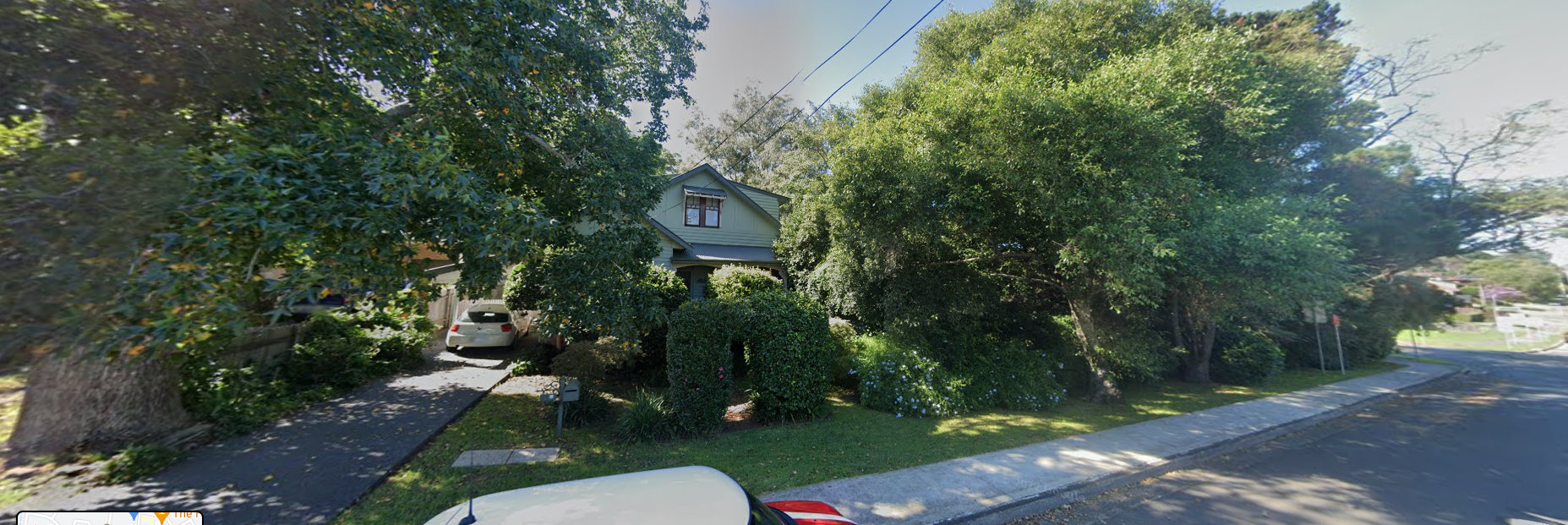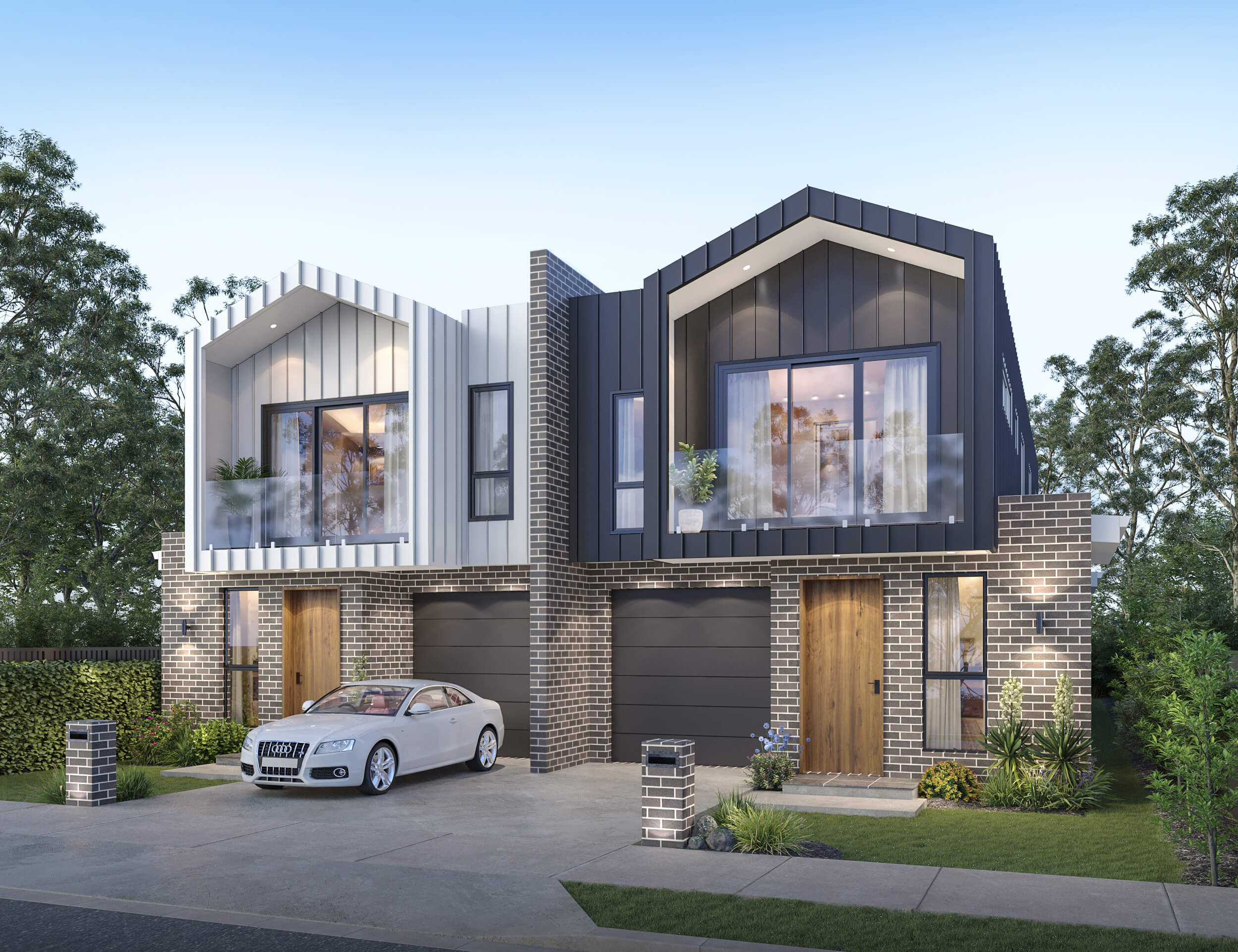Having designed over one thousand dual occupancies across NSW in the last decade, we have come to know some very key and important factors when finding, sourcing, and securing a block for your next dual occ development. Over the years we have had to be the bearer of bad news on numerous occasions when clients have brought an already purchased site to our office, only to discover that the feedback the agent gave them was incorrect.
I always tell our clients, you need to have your own dream team behind you when looking for development sites, a team who can give you valuable information, who can look at the constraints and risks across the site, a team who can give you clarity and confidence before making your next purchase. Securing the right site will go a long way to ensuring a much clearer and smoother process though the approval phase and eventually the build phase leading to a highly successful and profitable development.
Nathan Battishall, our founder and director shares below 10 top tips and Planning tools to check before securing your next dual occupancy block.
If you have a potential dual occupancy site you are looking at but needs some eyes across its permissibility and potential, please book in for one of the consultations we have available for you
-
Check that a Dual Occupancy is permitted in that particular zoning
The best way to find if a Dual Occupancy is permitted within that suburb and zoning check out the Local Environment Plan (LEP) for that particular council area. For example if you are in Newcastle, a simple google search for “Newcastle LEP” will bring up the LEP for the council area you are looking for.
Within the LEP you will see a land use table which will give you an indication of what types of developments are permissible in zones such as R2, R3 residential areas.

Here is a snippet from the Bankstown Local Environment Plan (LEP) 2015, here you can see that within the R2 zoning a dual occupancy is permitted.
Sometimes you will come across a council area that doesn’t mention the word “Dual Occupancy” or “attached dwelling” and it can be quite confusing. See an example from the Wollondilly LEP 2011

First look at this LEP we would be thinking that you can’t do a dual occupancy on R2 land in this council area, we see that under the R2 permissibility it doesn’t mention dual occupancy and then under prohibited it mentions that you can’t do an attached dwelling (duplex). But you will see that I have highlighted the word “Residential accommodation” under R2 permitted, see the screenshot below from the Wollondilly LEP definition for “residential accommodation”

So by taking the time and looking at the definition of what residential accommodation is, you can see that residential accommodation includes “dual occupancies”.
-
Check the minimum lot size for a dual occupancy
The Local Environment Plan (LEP) or LEP Mapping will always show you what the minimum lot size is for a dual occupancy within that particular council area. This is very key when looking for a site, if you don’t meet the minimum Lot size you have next to no chance of getting an approval for the development.

See a snippet from the Shellharbour LEP 2013, you can see here that both an attached and detached dual occupancy is permitted in R2 and R3 zones and that the minimum lot size for a dual occupancy is 450m2. So now we know in that particular LGA we can target blocks that are at least 450m2 or larger.
-
Check the minimum lot size for subdivision in the LEP
It’s very important to check to make sure you can subdivide your dual occupancy, there are some council’s in NSW that will allow a dual occupancy in certain R2 zonings but will not allow subdivision. Take the time to check in the LEP that subdivision for the dual occupancy is permissible, some council’s will even have a minimum Lot size, for example Newcastle require 200m2 for each resulting Lot in R2 zoning, Kiama Council require 300m2 for each resulting lot in R2.
-
Check the minimum block width required for a dual occupancy
This is a very important element to check, often the block dimensions the real estate are giving you are not 100% accurate, if you require the block to be 15 meters and the real estate marketing is saying it’s right on 15 meters, I would recommend getting a copy of the contact and look for the Deposited Plan (DP) this will show the accurate dimensions for the property.
When looking at a particular suburb, make sure you check in the Development Control Plan (DCP) under dual occupancy for that particular council, here is will tell you the required width that the block needs to be for a dual occupancy under development consent. If you are going down the Complying Development Pathway you will need a block that has a 15-meter width at the building line or a block with a registered laneway will only require you to have a 12-meter width at the building line.
-
Check the driveway crossover will work
This is something I have found that investors and developers often overlook, it’s all well and good putting a dual occupancy on your block but you need to get vehicle access to the garages while also meeting council’s requirements for the size, number and width of the driveway crossovers.
Have a look at the image below of a property in Caringbah in the Sutherland Shire, A block within the R2 zoning, a popular area for duplexes. By hopping onto google street view we can very quickly identify some large problems which pose a great risk to a dual occupancy development on this site

- There is an existing driveway crossing on the far right which makes one dwelling possible, but how will we access a second dwelling for a duplex? With a duplex development we either have a shared driveway crossing in the middle or two separate driveway cross overs on each side of the block
- We can’t do a driveway cross-over in the middle as there is a large tree within the front setback and also a street tree on council’s land
- We can’t put a driveway on the right-hand side as there is a huge native tree and we may even have the constraint of the power pole as well.
By using simple easy tools at your disposal such as real estate photos and google street view you can study the site before you have even stepped foot on the block.
-
Locate all current services
This is very key and again this often gets overlooked due to the excitement of finding a block of land for a good price, dial before you dig, council’s mapping software and google street view are tools that are easy to use and free of charge, always check for services or constraints due to services. Some important items are
- Check the sewer location, will you need to build over and concrete encase? This will add to the cost of the development, also can your dwellings get the appropriate fall from the houses to the sewer?
- Check locations of driveways to where current services, inspections and power poles
- Are there any stormwater lines or easements?
- Is there power, gas, NBN and water available to the block?
-
Check out the fall of the land
This is very important, often the slope of the land can have a large impact on either the permissibility of the project or the cost of the build. If the land slopes backwards it’s important to check to see if there is a stormwater easement at the back of the block, if there is not then you may need to negotiate an easement through the block of land behind or speak to an experienced stormwater engineer who can investigate some other alternatives. Keep in mind, sloping blocks can add a great deal to the cost of the build but cutting and filling or creating split levels in the build.
-
What is the orientation of the site
When looking at the site, try and picture how the designs will be laid out because the orientation of the site can have a big impact over the project.
Here are some key things to consider when you have found a site
- Will you be able to get the required solar access (which is usually 3 continuous hours in winter) to both living areas and both private open spaces?
- Will your development create large overshadowing to neighbour’s living areas and private open space? If your development will create large overshadowing there is a strong possibility that the neighbour council may write a submission objecting the development if you go down the DA pathway which can lead to redesign and sometimes even a withdrawal or rejection of the DA.
A little tip from us, try and find a block that faces north at the back, so that your dwellings living areas and alfresco can face North.
-
Keep an eye out for the location of trees on the block
It’s always important to look at what trees are on a block of land you are looking to purchase, here are some important questions in your assessment
- Are the trees native trees? (if you don’t know ask a local arborist for advice)
- Are there any native trees in the location of where the dwelling/s need to go
- Are there any trees on council’s strip of land hindering a driveway or potential for two driveways?
- Are there any large trees on the neighbours block which could hinder the development?
When it comes to trees, I find everyone has a different risk profile, as a fellow investor and developer myself, I take a very conservative approach, if there are too many questionable native trees on a block I pass the opportunity, I have seen many developments unable to either go ahead or get the desired site yield due to native trees not supported in council for removal. Ideally, we like to find sites we can design around native trees, which makes the development permissible but also helps maintain a strong carbon footprint by keeping trees where possible.

Here is an example of a site covered with established and native trees, yes the land is large enough for a dual occupancy, yes the block is in an excellent location close to the CBD but sites like this can often run too much risk for a small development such as a dual occupancy.
-
Get a copy of the sales contract
Once you have completed the other nine steps and now feel confident that a dual occupancy is possible and all the boxes are ticked, the next step is to get a copy of the sales contract from the agent. If the land is off-market here is where we recommend spending a few hundred dollars and order a copy of the 10.7 planning certificate, certificate of title, deposited plan, 88b instrument and sewer diagram.
This contract or the above documents will then confirm that a dual occupancy will be possible and here you can map out the best pathway, whether a Complying Development (CDC) is possible under the Low Rise Diversity Housing Code or whether you go through the Development Application (DA) pathway with council.
When you get the contract here are the key people you need to check the documents for you to ensure the site is fine to secure
- Designer/planner (Duplex Building Design)
- Your solicitor/lawyer or conveyancer
- Yourself (to better understand how to read the contact and be confident in your purchase)
MY SITE CHECKING TOOL BOX
Here are a couple of my daily tools I use to thoroughly check out development sites for myself and for our clients
Archistar – contours, site sizes, sales comparable, build in feasibility software, built in near maps
Google Streetview – locating trees, services, power poles, site constraints
Dial Before You Dig – Location of services, sewer locations, man holes, water
Intramaps – Not all council’s have this but it’s great for checking stormwater assets, flood and bushfire overlays
Council Local Environment Plan (LEP)
Council Development Control Plan (DCP)
DEVELOPING YOUR PROPERTY DREAM TEAM
As I mentioned earlier, it’s important to have a dream team when finding and securing development sites, if you make the wrong move the development can come crashing down. When you secure our team at Duplex Building Design you also get our team of consultants backing you as well.
– Planning Lawyer
– Town Planners
– Certifier
– Arborist and Bushfire Consultant
– Stormwater Engineer
– Floor Engineer
– Traffic Engineer
We hope that this latest article has given you some valuable education and knowledge around the importance or due diligence, compliance and constraint checking before securing a development site. If you would like to discuss a site you have in mind feel free to book in for a free 30 minute feasibility call











